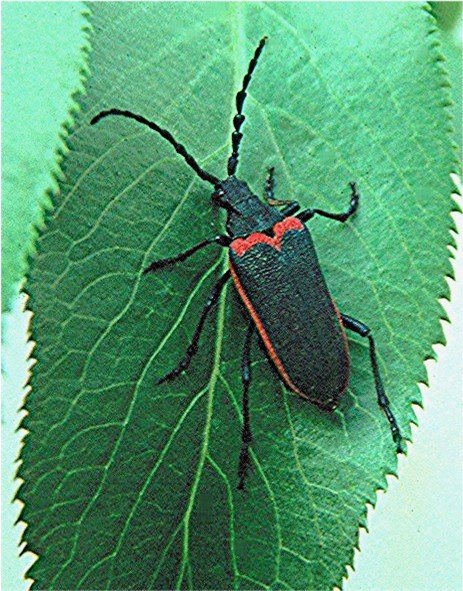|
Caraphia Lingafelteri
''Caraphia lingafelteri'' is a species of beetle in the family Cerambycidae. It was described by Ohbayashi and Yamasako in 2016. It is found in Matagalpa Department in Nicaragua Nicaragua (; ), officially the Republic of Nicaragua (), is the largest country in Central America, bordered by Honduras to the north, the Caribbean to the east, Costa Rica to the south, and the Pacific Ocean to the west. Managua is the cou .... Retrieved on 14 March 2021. References Lepturinae Beetles described in 2016 {{Lepturinae-stub ...[...More Info...] [...Related Items...] OR: [Wikipedia] [Google] [Baidu] |
Beetle
Beetles are insects that form the order Coleoptera (), in the superorder Endopterygota. Their front pair of wings are hardened into wing-cases, elytra, distinguishing them from most other insects. The Coleoptera, with about 400,000 described species, is the largest of all orders, constituting almost 40% of described insects and 25% of all known animal life-forms; new species are discovered frequently, with estimates suggesting that there are between 0.9 and 2.1 million total species. Found in almost every habitat except the sea and the polar regions, they interact with their ecosystems in several ways: beetles often feed on plants and fungi, break down animal and plant debris, and eat other invertebrates. Some species are serious agricultural pests, such as the Colorado potato beetle, while others such as Coccinellidae (ladybirds or ladybugs) eat aphids, scale insects, thrips, and other plant-sucking insects that damage crops. Beetles typically have a particularly hard e ... [...More Info...] [...Related Items...] OR: [Wikipedia] [Google] [Baidu] |
Cerambycidae
The longhorn beetles (Cerambycidae), also known as long-horned or longicorns, are a large family of beetles, with over 35,000 species described. Most species are characterized by extremely long antennae, which are often as long as or longer than the beetle's body. In various members of the family, however, the antennae are quite short (e.g., '' Neandra brunnea'') and such species can be difficult to distinguish from related beetle families such as the Chrysomelidae. The scientific name of this beetle family goes back to a figure from Greek mythology: after an argument with nymphs, the shepherd Cerambus was transformed into a large beetle with horns. Description Other than the typical long antennal length, the most consistently distinctive feature of the family is that the antennal sockets are located on low tubercles on the face; other beetles with long antennae lack these tubercles, and cerambycids with short antennae still possess them. They otherwise vary greatly in size, shap ... [...More Info...] [...Related Items...] OR: [Wikipedia] [Google] [Baidu] |
Matagalpa Department
Matagalpa () is a department in central Nicaragua. It covers an area of 6,804 km2 and has a population of 600,057 (2021 est). The capital is the city of Matagalpa with a population of about 111,000. Matagalpa is the second largest region of the country in population size, and the fifth in area (after the North Atlantic, the South Atlantic, Jinotega and Río San Juan). Matagalpa is the most diversified region producing coffee, cattle, milk products, vegetables, wood, gold, flowers. Its extensive forests, rivers and geography are suited for ecotourism. Municipalities # Ciudad Darío # Esquipulas # Matagalpa # Matiguas # Muy Muy Muy Muy is a municipality in the Matagalpa department of Nicaragua. The municipality of Muy Muy was named by the Matagalpa people, who were the indigenous group native to the area. In their native language "''muimui''" translates to "the best" ( ... # Rancho Grande # Río Blanco # San Dionisio # San Isidro # San Ramón # Sébaco # Terr ... [...More Info...] [...Related Items...] OR: [Wikipedia] [Google] [Baidu] |
Nicaragua
Nicaragua (; ), officially the Republic of Nicaragua (), is the largest country in Central America, bordered by Honduras to the north, the Caribbean to the east, Costa Rica to the south, and the Pacific Ocean to the west. Managua is the country's capital and largest city. , it was estimated to be the second largest city in Central America. Nicaragua's multiethnic population of six million includes people of mestizo, indigenous, European and African heritage. The main language is Spanish. Indigenous tribes on the Mosquito Coast speak their own languages and English. Originally inhabited by various indigenous cultures since ancient times, the region was conquered by the Spanish Empire in the 16th century. Nicaragua gained independence from Spain in 1821. The Mosquito Coast followed a different historical path, being colonized by the English in the 17th century and later coming under British rule. It became an autonomous territory of Nicaragua in 1860 and its northernmost part ... [...More Info...] [...Related Items...] OR: [Wikipedia] [Google] [Baidu] |
Lepturinae
Lepturinae, the lepturine beetles, is a subfamily of the longhorn beetle family (Cerambycidae), containing about 150 genera worldwide. This lineage is most diverse in the Northern Hemisphere. Until recently the subfamily Necydalinae was included within the lepturines, but this has been recently recognized as a separate subfamily. Nine tribes are usually recognized today, with a tenth, Caraphiini, created in 2016. A few genera are of uncertain placement within the subfamily. Usually among the smaller members of their family, these beetles are of a slender shape – particularly the thorax is markedly less wide than the wings, while the elytra tips are often pointed. They differ from most other longhorn beetles in that the antennae are not directly adjacent to the compound eyes. Hence, the latter are generally oval in outline, rather than having an indentation where the antennae originate, or even being divided by them. In addition, sexual dichromatism is not infrequently see ... [...More Info...] [...Related Items...] OR: [Wikipedia] [Google] [Baidu] |


